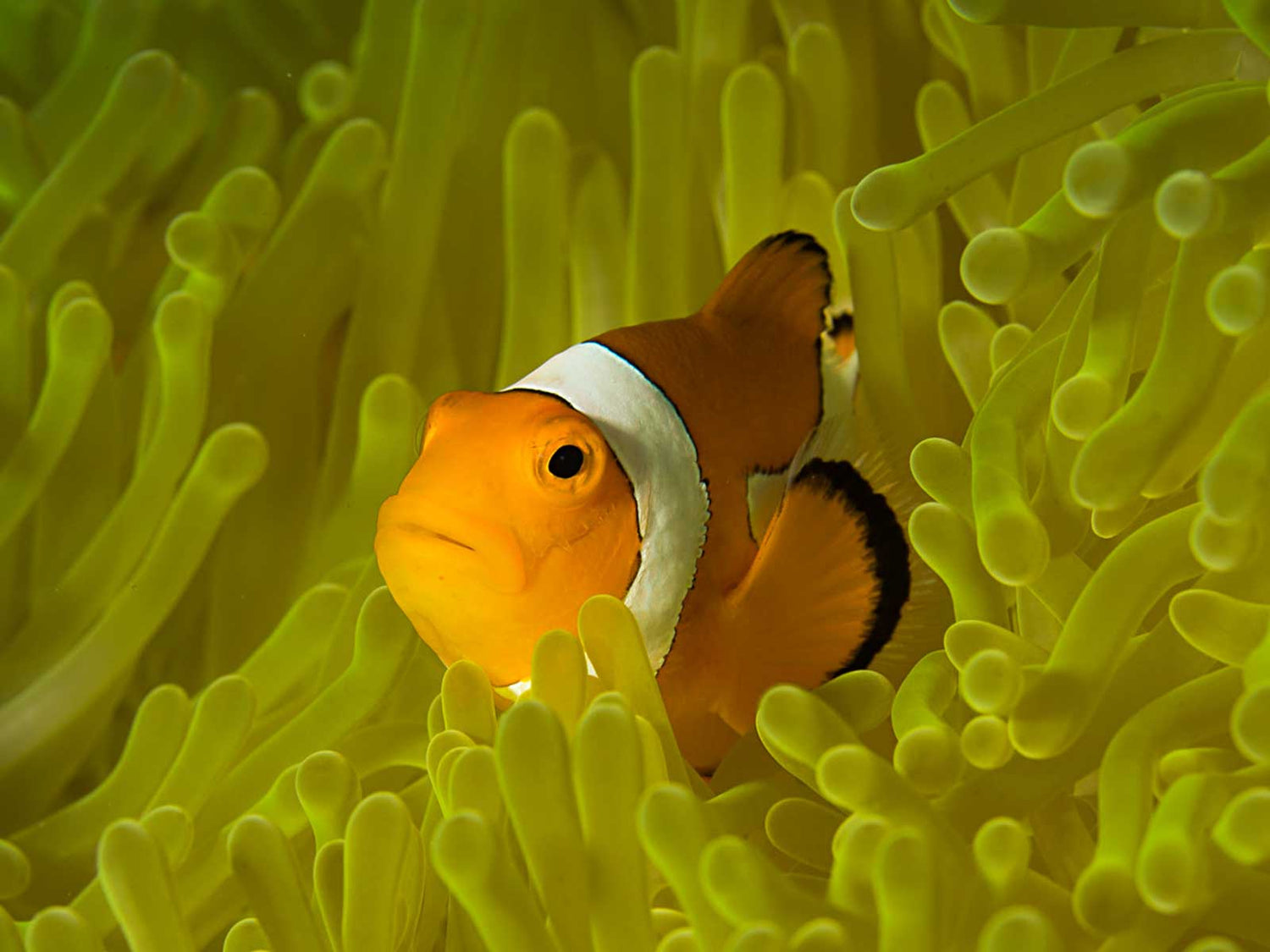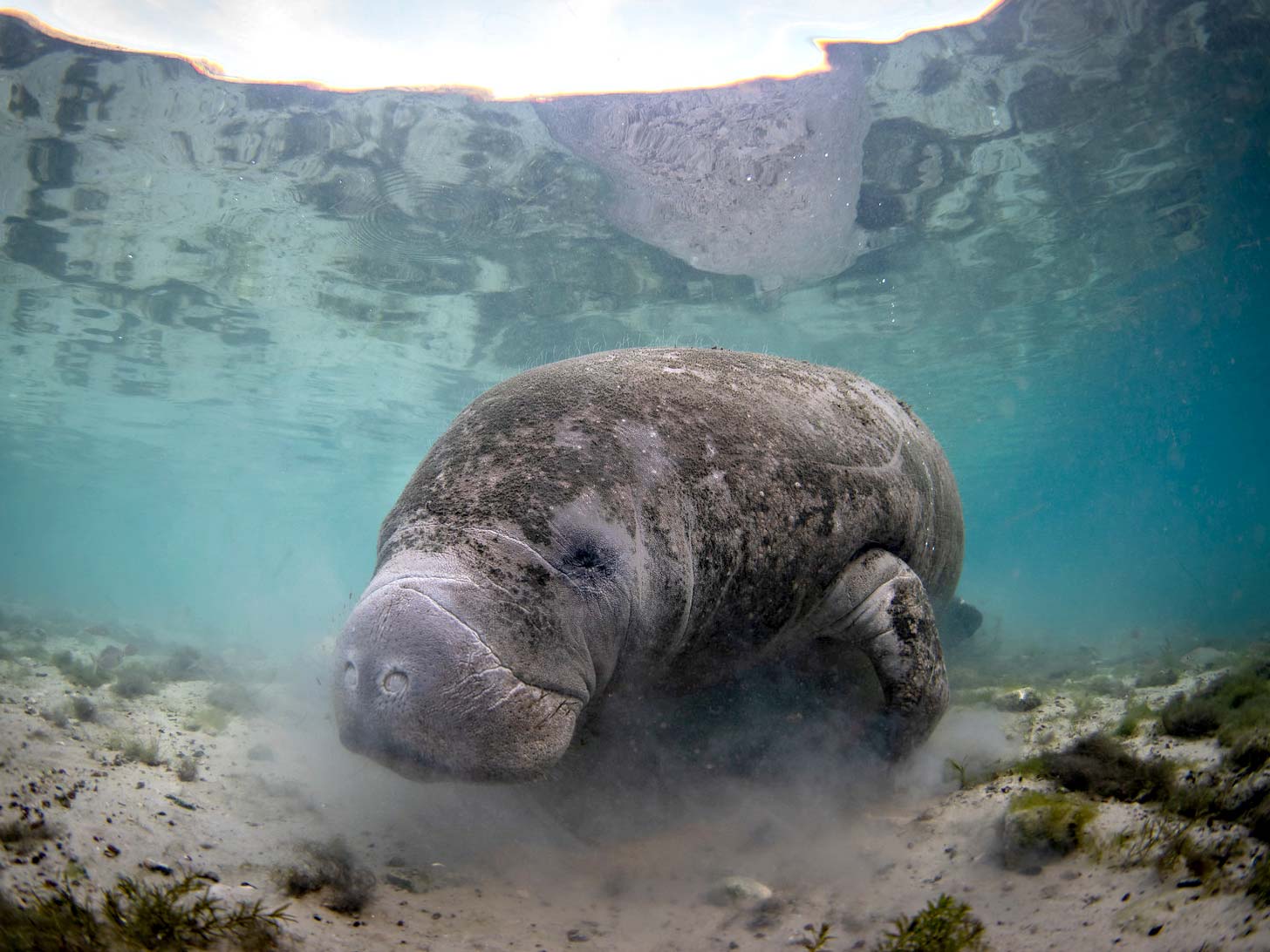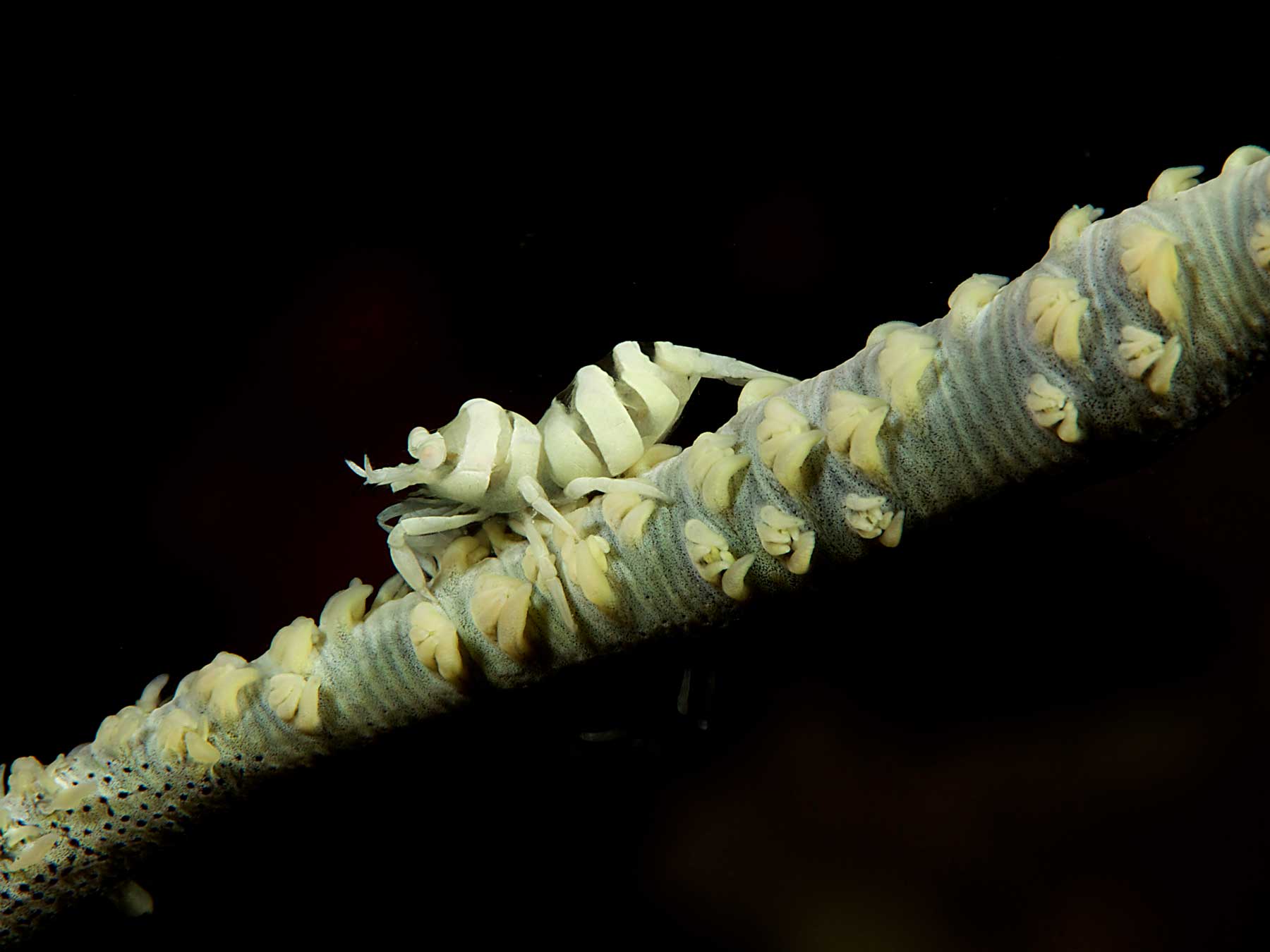We think clownfish are some of the most joyful subjects to photograph underwater with their bright, easily distinguished coloring and playful nature.
You won't be finding Nemo swimming out in the open ocean. If you find a clownfish, you have found an anemone- and with it many photo opportunities in a small space. Anemones can be closed up like a balloon with the clownfish hovering over top, or fully open with these colorful creatures darting in and out of its tentacles.
Where
Southern Pacific and Indian Ocean
DSLR + Mirrorless
ISO: 100 to 200 (we are assuming you are using flash here)
Mode: Manual camera, TTL strobes, or AV if manual is unavailable
Aperture: f/13 to f/22; small apertures (larger numbers) are helpful here
Shutter Speed: 1/125th-1/250th (or 1/200th depending on max flash synch speed)
Lens: Any lens will work great, depending if you want a scene or a portrait. Our favorite would be 60mm Macro or 100mm (105mm) Macro. But if you're shooting a super-wide fisheye lens, clownfish in anemone can also be great close focus wide angle subjects.
Read more: Close Focus Wide Angle Underwater Camera Settings
Point + Shoot
ISO: 100 to 200
Mode: M Manual or Av Aperture Priority; choose Macro focus mode if available
Aperture: The smallest possible aperture (largest number) for maximum depth-of-field
Shutter Speed: 1/125 to 1/200
Focal Length: Zoom in

If you are fortunate enough to have the angle needed for open water background when shooting basic macro images, an interesting thing happens. Even shallow on a sunlit reef the fact that your lens is stopped down and your flash is bright will make your background jet black. This adds stunning impact and also gives negative space that can be used for ad copy.
Technique
Whether the size of a beach ball or a tiny plate, the host anemone creates a perfect backdrop for shooting clownfish. Often there will be shrimp cohabiting the tentacles, so a macro lens is heaven. The best anemones for shooting are ones that are positioned in a way that allows an upward camera angle, and an unobstructed view for your lighting.
Most anemones have bright and translucent tentacles, so with two strobes you will get very smooth light as it passes through them. Clownfish are very active, and will provide endless poses... but that is the challenge. They never stop moving. Set up in a position you will be able to hold for awhile without arm fatigue and pan through your lens until you figure out the patterns they use as they plow through the tentacles, look at you, then dive back into them.
There will be many "misses" and tail shots. Picking your frame and waiting for them to swim back into it is sometimes the best way. You will find they have a very specific distance that they will tolerate; much closer than 2 feet will cause them to move to the other side of the anemone out of view. When you back off to allow them their comfort zone, the behavior will change. They will even come up and challenge briefly before diving back in. As you review many frames following a shoot- your favorites will be where the fish is in full view, particularly when they face the camera.

Careful adjustments to your strobe arms (usually out to the sides) will allow you to create shadows of varying brightness- imagine this scene drenched in light with no shadows- it would likely be pretty- but not deep. Shadows add depth and dimension to a flat image.
Strobes
Use the translucence of the tentacles for soft shadowing and interesting color tint. Dual strobes are pretty helpful if you want to have the details around the fishes face. One strobe can light directly from above, with one from the side for the "glow"- but our favorite is side lighting since this is one of the few subjects we have that light can pass through.
Additional Reading
Super Macro Underwater Photography Techniques
Close Focus Wide Angle In Depth
Macro Close-Up Underwater Camera Settings













